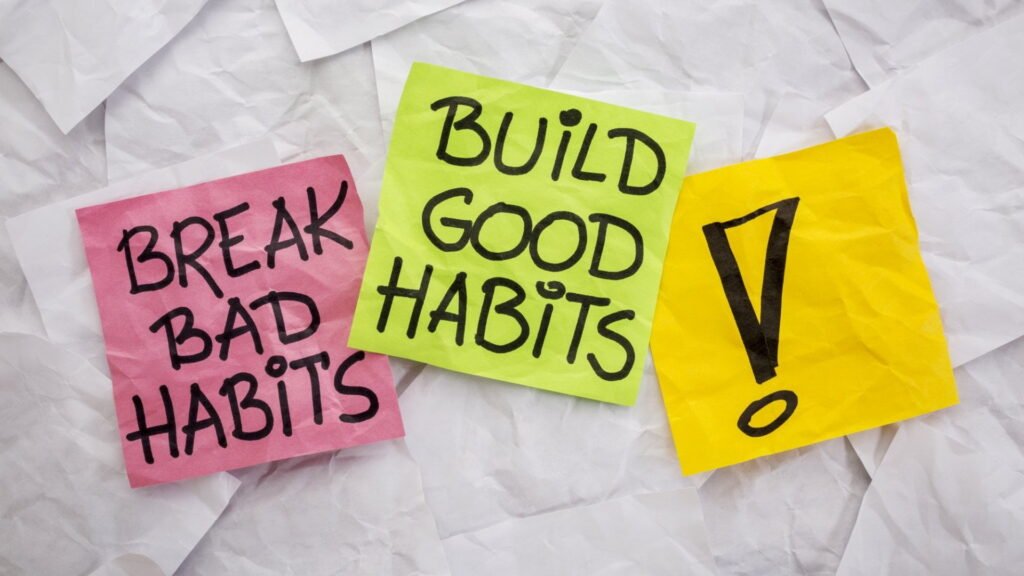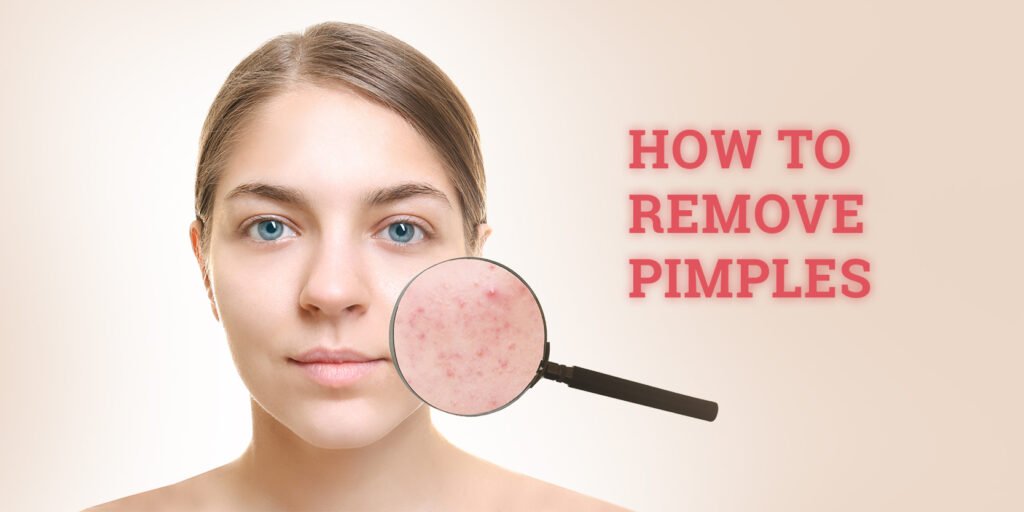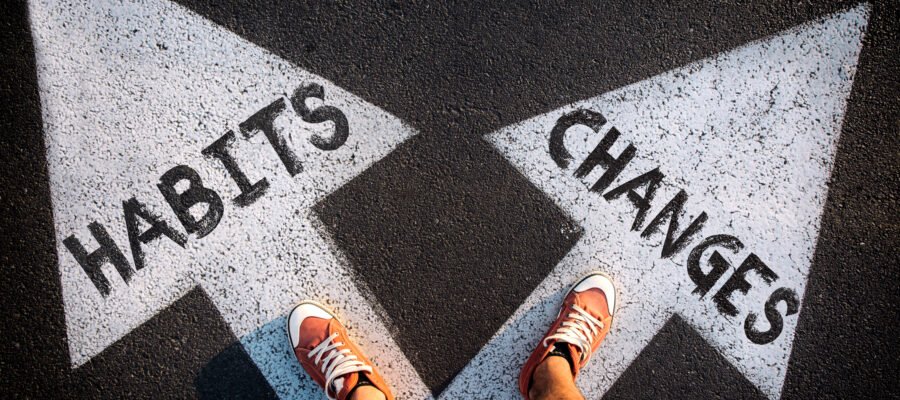
Bad habits
Bad habits are behaviors, actions, or patterns of activity that are detrimental to a person’s well-being, health, productivity, or personal development. These habits often provide short-term gratification or relief but can lead to negative consequences in the long run. Bad habits can affect various aspects of life, including physical health, mental well-being, relationships, and overall quality of life.
Examples of common bad habits include:
- Procrastination: Delaying important tasks or responsibilities, which can lead to increased stress, missed deadlines, and decreased productivity.
- Unhealthy Eating: Consuming excessive amounts of junk food, sugary drinks, or unhealthy snacks, which can lead to weight gain, poor nutrition, and various health issues.
- Smoking: Smoking tobacco products is harmful to health and can lead to serious illnesses such as lung cancer, heart disease, and respiratory problems.
- Excessive Screen Time: Spending too much time on screens, such as computers, smartphones, and TVs, can negatively impact mental health, sleep quality, and social interactions.
- Nail Biting: Biting nails can damage the nails and surrounding skin, and it’s often a response to stress or anxiety.
- Negative Self-Talk: Engaging in self-criticism and negative thoughts about oneself, which can harm self-esteem and mental well-being.
- Problems with Sleep: Poor sleep habits, such as staying up late or having an irregular sleep schedule, can lead to fatigue, decreased cognitive function, and mood disturbances.
- Excessive Caffeine Consumption: Consuming too much caffeine, often through multiple cups of coffee or energy drinks, can lead to jitteriness, insomnia, and increased heart rate.
- Biting Lip or Cheek: Similar to nail biting, this habit can cause damage to the skin and lead to discomfort.
- Overuse of Social Media: Spending excessive time on social media platforms can lead to feelings of comparison, low self-esteem, and decreased face-to-face social interactions.
- Overspending: Engaging in impulsive and excessive spending, often leading to financial strain and debt.
- Interrupting Others: Constantly interrupting others while they’re speaking can negatively impact communication and relationships.
Breaking bad habits and replacing them with positive ones requires awareness, commitment, and consistent effort. It’s important to recognize the impact of these habits on your life and take steps to make positive changes for your overall well-being.
How to stop bad habits addiction
Breaking free from bad habits requires a combination of awareness, commitment, and effective strategies. Here’s a step-by-step guide to help you overcome bad habits:
- Recognize and Acknowledge: The first step is to identify the bad habit you want to change and acknowledge its negative impact on your life. Be honest with yourself about the consequences it brings.
- Set Clear Goals: Define specific goals for quitting the bad habit. Having a clear purpose and vision will give you motivation to stay on track.
- Understand Triggers: Identify the situations, emotions, or triggers that lead to your bad habit. Understanding what prompts the behavior can help you avoid those triggers or develop strategies to cope with them.
- Replace with Positive Habits: Substitute the bad habit with a positive one. For example, if you’re trying to quit smoking, replace it with activities like taking a walk, chewing gum, or deep breathing exercises.
- Create a Support System: Share your goal with friends, family, or support groups. Having a support system can provide encouragement, accountability, and understanding when you’re facing challenges.
- Practice Mindfulness: Mindfulness techniques, such as meditation and deep breathing, can help you become more aware of your thoughts and impulses, making it easier to resist the urge to engage in the bad habit.
- Use Positive Reinforcement: Reward yourself for small victories along the way. Positive reinforcement can boost your motivation and reinforce the idea that change is rewarding.
- Track Progress: Keep a journal or record of your efforts and progress. This will help you see how far you’ve come and remind you of your commitment.
- Seek Professional Help: For more challenging habits or addictions, seeking professional help from therapists, counselors, or support groups can provide you with specialized guidance and strategies.
- Practice Patience: Breaking a bad habit takes time and effort. Be patient with yourself and don’t get discouraged by setbacks. Remember that relapses are common, but they don’t mean you’ve failed.
- Visualize Success: Imagine your life without the bad habit and visualize the positive outcomes. This mental imagery can reinforce your determination to change.
- Stay Persistent: Changing habits is a gradual process. Stay persistent and keep working on your goal even when faced with difficulties.
Remember that breaking a bad habit is a journey, and setbacks are a normal part of the process. Be compassionate toward yourself and celebrate each step forward, no matter how small it may seem.
Breaking of bad habits Psychology
Breaking bad habits from a psychological perspective involves understanding the underlying mechanisms that drive these habits and employing strategies to modify or replace them with healthier behaviors. Here’s a closer look at how psychology can help in breaking bad habits:
1. Habit Loop: According to the habit loop model proposed by Charles Duhigg, habits consist of three components: cue (trigger), routine (habitual behavior), and reward. Identifying these components can help in understanding the cycle of a bad habit and finding ways to intervene.
2. Self-Awareness: Developing self-awareness is crucial. Recognize the triggers, emotions, and situations that lead to the bad habit. By understanding what prompts the behavior, you can take steps to avoid or manage those triggers.
3. Replacement Behavior: Replace the bad habit with a healthier alternative. This helps satisfy the same need or desire that the bad habit fulfilled. For instance, if stress leads to snacking, replace it with deep breathing exercises or a short walk.
4. Positive Reinforcement: Reward yourself for successfully avoiding the bad habit. Positive reinforcement strengthens the connection between the new behavior and the reward, making it more likely to stick.
5. Mindfulness and Cognitive Reframing: Mindfulness techniques help increase awareness of thoughts and impulses, making it easier to resist the urge. Cognitive reframing involves changing the way you think about the habit, focusing on its negative consequences rather than the temporary pleasure.
6. Gradual Change: Cold turkey approaches can be challenging. Gradually reduce the frequency or intensity of the bad habit. This helps reduce withdrawal symptoms and makes the transition smoother.
7. Social Support: Share your goal with friends, family, or support groups. Social support provides encouragement, accountability, and a sense of community during your journey.
8. Consistency and Persistence: Breaking habits takes time. Be patient and consistent in your efforts. Expect setbacks but don’t let them discourage you. Each effort counts toward progress.
9. Environmental Modification: Alter your environment to make it less conducive to the bad habit. For example, remove unhealthy snacks from your home or rearrange your workspace to minimize distractions.
10. Visual Cues and Reminders: Use visual cues or reminders to keep your goal in focus. This could be notes, alarms, or images that represent your commitment to breaking the habit.
11. Habit Stacking: Associate the new habit you want to build with an existing habit. This leverages the existing neural pathways to help the new habit become more automatic.
12. Professional Help: If a habit is deeply ingrained or causing significant harm, consider seeking guidance from a therapist or counselor. They can provide tailored strategies and support.
Breaking bad habits is a process that requires patience, effort, and a willingness to change. By understanding the psychological factors that drive habits and applying effective strategies, you can work towards replacing unwanted behaviors with healthier alternatives.
How to stop bad habits addiction permanently
Breaking bad habits and overcoming addiction requires a comprehensive approach that addresses the physical, psychological, and social aspects of the habit. While achieving permanent change can be challenging, here are some strategies that can help:
**1. Commit to Change: Make a firm decision to quit the habit. This commitment is essential for long-term success.
2. Seek Professional Help: For addictions, seeking help from healthcare professionals, therapists, or addiction specialists is crucial. They can provide personalized guidance and support based on your specific situation.
3. Understand Triggers: Identify the triggers that lead to the habit or addiction. These triggers could be emotions, situations, or people. Developing strategies to manage or avoid these triggers is important.
4. Develop Coping Strategies: Learn healthy ways to cope with stress, anxiety, and other emotions that may have contributed to the habit. This could include mindfulness, meditation, exercise, or engaging in hobbies.
5. Set Clear Goals: Define clear and achievable goals for quitting the habit. Break down your goals into smaller steps to make progress manageable.
6. Create a Support System: Surround yourself with supportive friends, family, or support groups. Accountability and encouragement from others can be instrumental in maintaining your commitment.
7. Replace with Positive Activities: Replace the habit with positive activities that provide similar benefits. Engaging in hobbies, spending time with loved ones, or pursuing interests can help fill the void left by the habit.
8. Behavioral Therapy: Cognitive-behavioral therapy (CBT) and other forms of therapy can help address the underlying thought patterns and behaviors that contribute to the habit or addiction.
9. Medication (if applicable): In some cases, medication may be prescribed by a healthcare professional to manage withdrawal symptoms or cravings associated with certain habits or addictions.
10. Avoid Triggers: Modify your environment to reduce exposure to triggers that may tempt you to engage in the habit. This might involve avoiding certain places, people, or situations.
11. Practice Patience: Breaking an addiction takes time. Be patient with yourself and understand that setbacks may occur. It’s important to persevere despite challenges.
12. Maintain Healthy Lifestyle: Prioritize healthy habits such as regular exercise, balanced nutrition, and sufficient sleep. A healthy lifestyle can support your overall well-being and make it easier to resist temptations.
13. Visualize Success: Imagine yourself living a life free from the habit or addiction. Visualizing the positive outcomes can reinforce your motivation.
14. Celebrate Milestones: Celebrate your achievements along the way, whether they’re small victories or significant milestones. Rewarding yourself for progress can boost your morale.
Remember that overcoming addiction and breaking bad habits is a journey that requires ongoing effort and commitment. It’s important to be patient and forgiving of yourself throughout the process. If you find that your habit or addiction is particularly challenging to break, seeking professional help is highly recommended.
3 steps to changing bad habits
Changing bad habits can be a gradual process, and it often involves several steps. Here are three fundamental steps to get you started on the path to changing bad habits:
- Self-Awareness:
- The first and most crucial step in changing a bad habit is to become aware of it. Take time to reflect on your behavior and identify the specific habit you want to change.
- Understand the triggers and circumstances that lead to this habit. What prompts you to engage in it? Is it stress, boredom, social situations, or certain emotions?
- Recognize the negative consequences of the habit in your life. Understanding the harm it causes can provide motivation for change.
- Replace with a Positive Habit:
- Once you’ve identified the bad habit, work on finding a healthier and more constructive behavior to replace it with. This new behavior should fulfill a similar need or desire.
- Start small and set achievable goals. Breaking a habit can be challenging, so it’s important to build up gradually. Focus on making incremental changes.
- For example, if you’re trying to quit smoking, you might replace smoking with chewing gum or taking short walks whenever you feel the urge to smoke.
- Consistent Practice and Patience:
- Changing a habit requires practice and consistency. Be patient with yourself and understand that slip-ups are normal and expected.
- Create a plan to reinforce the new habit. Use positive reinforcement and rewards for your successes. This can help motivate you to stick with the change.
- Track your progress. Keep a journal or use a habit-tracking app to monitor how you’re doing. Celebrate your achievements and learn from setbacks.
Remember that changing a bad habit is a process that takes time and effort. It’s important to stay committed and not get discouraged if you face setbacks along the way. Gradual and sustained progress is the key to long-term success in breaking bad habits.
How to break a habit in 21 days
The idea that it takes 21 days to break a habit is a common belief, but it’s not backed by strong scientific evidence. Habit formation and breaking habits vary from person to person and depend on several factors, including the complexity of the habit and individual differences. Some habits may take longer to break than others. Nonetheless, setting a 21-day goal can be a useful starting point. Here are steps to help you break a habit in roughly 21 days:
- Commit to Change:
- Start by making a firm commitment to break the habit. Your determination and motivation are crucial in this process.
- Identify Triggers:
- Understand the situations, emotions, or cues that trigger the habit. Knowing your triggers will help you avoid or manage them.
- Choose a Replacement Behavior:
- Decide on a healthier behavior or habit that will replace the one you want to break. This new behavior should serve a similar purpose or fulfill the same need.
- Set Clear Goals:
- Define specific and achievable goals for each day during the 21-day period. For example, if you’re quitting smoking, you might start with reducing the number of cigarettes smoked per day.
- Create a Support System:
- Share your goal with friends, family, or a support group. Their encouragement and accountability can be motivating.
- Track Your Progress:
- Keep a journal or use a habit-tracking app to monitor your daily progress. Document your successes, challenges, and any insights gained along the way.
- Practice Patience:
- Be patient with yourself. Habits take time to change, and setbacks are common. Don’t be discouraged by occasional slip-ups.
- Positive Reinforcement:
- Reward yourself for achieving your daily goals. Positive reinforcement can strengthen your resolve to stick with the new behavior.
- Mindfulness and Self-Awareness:
- Practice mindfulness to increase awareness of your thoughts, feelings, and urges related to the habit. This can help you resist temptations.
- Environmental Modifications:
- Modify your environment to make it less conducive to the habit. Remove or avoid triggers that lead to the behavior.
- Stay Consistent:
- Maintain consistency in your efforts throughout the 21-day period. Consistency is key to forming new habits and breaking old ones.
- Seek Professional Help (if needed):
- If the habit is particularly challenging or causing harm to your physical or mental health, consider seeking guidance from a therapist or counselor.
Remember that the 21-day guideline is a starting point, and some habits may take longer to break. It’s essential to continue practicing the new behavior even after the initial 21 days to reinforce the change and ensure it becomes a long-term habit. Breaking a habit is a process that requires persistence, self-awareness, and a commitment to positive change.
Changing bad habits to good habits
Changing bad habits into good habits involves a deliberate and consistent effort to replace undesirable behaviors with positive ones. Here’s a step-by-step guide on how to transition from bad habits to good habits:
- Identify the Bad Habit:
- Begin by recognizing the specific bad habit you want to change. It’s important to be clear about what you’re trying to address.
- Understand the Trigger:
- Analyze what triggers or cues prompt the bad habit. Is it stress, boredom, social situations, certain emotions, or specific environmental factors?
- Determine the Purpose:
- Understand the underlying need or purpose that the bad habit fulfills. Often, bad habits serve as coping mechanisms or provide some form of gratification.
- Set Clear Goals:
- Define clear and achievable goals for developing a good habit. Make sure your goals are specific, measurable, and time-bound (SMART goals).
- Choose a Replacement Habit:
- Identify a positive behavior or habit that can fulfill the same need as the bad habit. The replacement habit should be healthy and aligned with your goals.
- Plan for Triggers:
- Develop strategies to deal with the triggers that prompt the bad habit. This might involve avoiding triggers, modifying your environment, or finding healthier ways to cope with them.
- Start Small:
- Begin with manageable steps. Don’t try to change everything at once. Gradual change is often more sustainable.
- Track Your Progress:
- Keep a journal or use habit-tracking apps to monitor your efforts. Record your successes, setbacks, and any insights gained during the process.
- Practice Consistency:
- Consistency is key to forming good habits. Commit to practicing the new habit daily or regularly.
- Positive Reinforcement:
- Reward yourself for achieving milestones and sticking to your new habit. Positive reinforcement can motivate you to continue.
- Seek Support:
- Share your goals with friends, family, or support groups. Having a support system can provide encouragement and accountability.
- Be Patient and Persistent:
- Changing habits takes time and effort. Expect occasional setbacks, and don’t get discouraged by them. Stay committed to the process.
- Adjust as Needed:
- Periodically assess your progress and be willing to adjust your approach if necessary. Adapt to challenges and fine-tune your strategy.
- Celebrate Successes:
- Celebrate your achievements, no matter how small they may seem. Acknowledging your progress can boost your motivation.
- Maintain Self-Awareness:
- Continue to practice self-awareness and mindfulness. Be attuned to your thoughts, feelings, and impulses related to both the bad habit and the new habit.
- Seek Professional Help (if needed):
- If breaking a particular bad habit is exceptionally challenging or causing harm, consider seeking guidance from a therapist, counselor, or specialist in behavior change.
Remember that changing bad habits into good habits is a gradual process that requires persistence and dedication. It’s about rewiring your brain and establishing new routines that align with your desired outcomes and values. With time and effort, you can replace negative behaviors with positive ones and improve your overall quality of life.
Conclusion
n conclusion, changing bad habits into good habits is a transformative journey that requires self-awareness, determination, and persistence. It’s not an overnight process, but by following a structured approach, setting clear goals, and seeking support when needed, you can successfully replace undesirable behaviors with healthier ones.
Remember that setbacks are a natural part of the process, and staying patient and committed is essential. Celebrate your successes, no matter how small, and use positive reinforcement to motivate yourself along the way. Additionally, staying mindful of triggers, understanding the underlying motivations for your habits, and adapting your strategies as necessary can be instrumental in your journey toward positive change.
Ultimately, the process of changing habits is about personal growth and improvement. It’s about reshaping your behavior to align with your values and goals, leading to a more fulfilling and healthier life. Whether it’s breaking a harmful addiction or simply adopting better daily routines, the effort you invest in changing habits can lead to lasting positive outcomes.
FAQs
here are some frequently asked questions (FAQs) related to the topics of changing bad habits into good habits, breaking bad habits, and habit formation:
1. How do I know if a habit is genuinely “bad” or just a personal preference?
- Distinguishing between a bad habit and a personal preference can be subjective. A habit is generally considered “bad” if it has negative consequences for your well-being, health, or goals. Reflect on how the habit affects your life and whether it aligns with your values and goals.
2. Is it easier to change a bad habit or start a completely new habit from scratch?
- Changing a bad habit may be easier for some people because it involves replacing an existing behavior. Starting a new habit from scratch can also be challenging but may be less complex if it doesn’t involve breaking an ingrained pattern.
3. Can good habits help in breaking bad habits?
- Yes, cultivating good habits can indirectly support breaking bad habits. Engaging in positive behaviors can fill the void left by the bad habit and create a more favorable environment for change.
4. Are there any common misconceptions about habit change?
- One common misconception is the notion that it takes exactly 21 days to change a habit. In reality, the time required for habit change varies widely among individuals and habits.
5. What strategies can I use to overcome resistance to change when breaking bad habits?
- Resistance to change is natural. To overcome it, focus on the benefits of changing the habit, remind yourself of your motivations, and seek support from friends or professionals if needed.
6. Can habits be both good and bad at the same time?
- Yes, habits can have both positive and negative aspects. For example, a habit of checking your phone frequently can be good for staying connected but bad for productivity. Identifying these dual aspects can help in determining if a habit needs adjustment.
7. Is willpower the most critical factor in changing habits?
- Willpower is important but limited. Creating a supportive environment, setting clear goals, and using strategies like positive reinforcement can reduce the reliance on willpower.
8. Are there specific habits that are universally considered “bad”?
- While some habits, like smoking or excessive alcohol consumption, are generally considered universally harmful, whether a habit is “bad” can vary depending on cultural, social, and personal factors.
9. What is the role of self-compassion in habit change?
- Self-compassion is crucial in habit change. Being kind and forgiving to yourself, especially in the face of setbacks or relapses, can help you maintain motivation and resilience.
10. Can changing a bad habit lead to improved mental health?
– Yes, breaking a bad habit can have positive effects on mental health. It can reduce stress, anxiety, and guilt, leading to improved overall well-being.
Remember that habit change is a highly individualized process, and the answers to these questions may vary based on your specific circumstances and the habits you’re addressing. Adapt your approach to suit your unique needs and goals.
https://en.wikipedia.org/wiki/Bad_habit
also read Get rid of Pimples in simpleways






